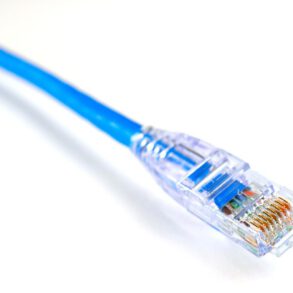Network adapters connect desktop computers to the Internet.
BananaStock/BananaStock/Getty Images
Wireless adapters are electronic devices that allow computers to connect to the Internet and to other computers without using wires. They send data via radio waves to routers that pass it on to broadband modems or internal networks. Most laptops and tablet computers have built-in wireless adapters, but you often have to install them on desktop computers. Before adding them to office desktops and establishing a wireless network in your office, the kind of adapter you get must match your needs.
Types of Adapters
A wireless adapter has to obtain signals from inside the computer, change them into radio waves and send them out via an antenna. For a desktop computer, the electronic card either plugs in to a PCI slot inside the computer case, into a USB port from the outside, or into an Ethernet port via an Ethernet network cable. For laptops that don’t have a built-in adapter, the electronic card can fit into a PCMCIA slot or a mini PCI slot on the side of the laptop. For tablets or notebooks that don’t have an adapter, the electronic card can fit into a memory card slot. The desktop PCI cards have an antenna that extends out of the back of the computer, while the other cards have the antennas inside the card cases.
Wireless Standards
The radio waves used by wireless adapters have to satisfy one of the 802.11 broadcast standards of the Institute of Electrical and Electronics Engineers (IEEE). The most recent standard in common use as of January 2013 is 802.11n, but older adapter models use the “b” or “g” standards. These standards determine the speed of data transfer at which the adapters broadcast, and all use the 2.4GHz radio frequency band. Adapters using the recent standards also support the older standards. A draft standard expected to be approved in 2013 is 802.11ac which will be able to use the less-crowded 5GHz radio frequency band.
Speeds
The oldest standard, IEEE 802.11b, specifies broadcast speeds of up to 11Mbps. The later model adapters broadcast at IEEE 802.11g speeds that can range up to 54Mbps. The IEEE 802.11n standard can theoretically reach speeds of 300Mbps but the adapters using it are usually slower because the radio frequencies are crowded and there is interference. The draft 802.11ac standard will theoretically be able to reach 1Gbps and will in fact be quite fast because it can operate in the 5GHz frequency band. A business can purchase adapters and routers now satisfying the 802.11ac standard to reduce obsolescence.
Security
Wireless adapters broadcast the signals from your computer with a range of about 200 feet. Anyone with a wireless adapter installed in their computers or laptops can pick up your signal and access your files. Securing your wireless network is especially critical for businesses protecting sensitive material and their intellectual property. To avoid this unauthorized access, wireless adapters use encryption to secure their signals. The WEP, WPA and WPA2 protocols offer password-protected and encrypted transmissions for wireless networks. Your adapter must support these protocols to use them; most do support them. The WEP protocol has some weaknesses, while the WPA2 protocol has the strongest security.




